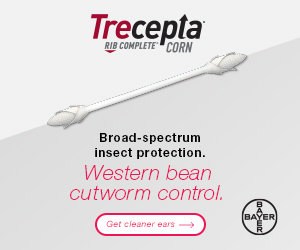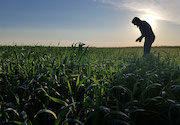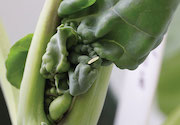| |
| |
 |
 |
| |
 |
|
@{mv_date_MMM d, yyyy}@ |
|
| |
How you manage phosphorus can change quite a bit depending on where you farm. For those who farm near any of the Great Lakes, P runoff and its contribution to algal blooms are major concerns.
» Read more...
Stocks of wheat, oats, dry peas and lentils were up as of July 31, while canola and barley stocks were down, largely due to higher exports, as global demand for Canadian grain remained high.
» Read more...
On Sept. 9, the Canadian Federation of Agriculture hosted the National Agriculture Leaders Debate, with representatives from four of the national parties, ahead of the federal election taking place on Sept. 20.
» Listen now...
|
| |
|
| |

Trecepta ® RIB Complete ® corn provides effective Western bean cutworm control and three modes of action for broad-spectrum control against above-ground pests including European corn borer, corn earworm, fall armyworm and black cutworm. Trecepta technology delivers maximum protection to reduce yield loss and improve grain quality. Helping to put more grain in the bin and more money in the bank.*
» Get cleaner ears...
*Where Western Bean Cutworms were present, tested on corn hybrids containing the Trecepta trait had higher yields and quality than tested corn hybrids not containing the Trecepta trait. Source: Market Development Trials (2017-2018) n= 11.
|
| |
|
| |
 A recent paper by University of Guelph professor Mary Ruth McDonald and AAFC research scientist Bruce Gossen examines how new technologies could enhance natural control of insect pests and disease management and reduce reliance on synthetic pesticides. Technological advances will help agriculture return to a model that allows for greater biological diversity.
» Learn more
A recent paper by University of Guelph professor Mary Ruth McDonald and AAFC research scientist Bruce Gossen examines how new technologies could enhance natural control of insect pests and disease management and reduce reliance on synthetic pesticides. Technological advances will help agriculture return to a model that allows for greater biological diversity.
» Learn more |
| |
 Swede midge is a serious crop pest, causing significant damage to canola and brassicaceous vegetable crops in Eastern Canada. Although swede midge is not yet on the Prairies, it has the potential to seriously impact canola and other crops like mustard and camelina. A four-year study at AAFC-Saskatoon set out to gain a better understanding of the pest’s chemical ecology and potential Prairie hosts.
» Learn more
Swede midge is a serious crop pest, causing significant damage to canola and brassicaceous vegetable crops in Eastern Canada. Although swede midge is not yet on the Prairies, it has the potential to seriously impact canola and other crops like mustard and camelina. A four-year study at AAFC-Saskatoon set out to gain a better understanding of the pest’s chemical ecology and potential Prairie hosts.
» Learn more |
| |
|
| |
|
|
| |
| |





